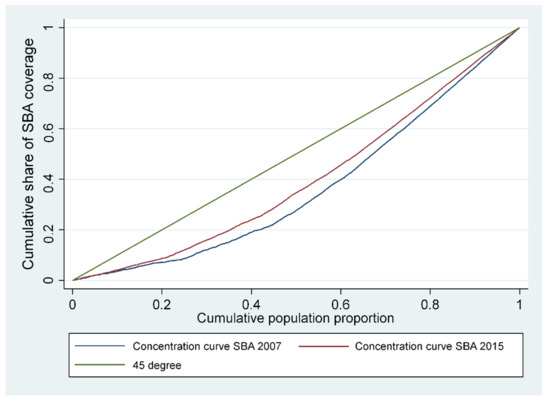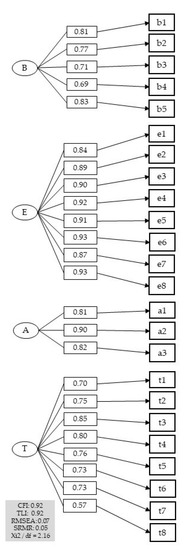Int. J. Environ. Res. Public Health 2022, 19(6), 3566; https://doi.org/10.3390/ijerph19063566 - 17 Mar 2022
Cited by 10 | Viewed by 3399
Abstract
Skilled birth attendance is critical to reduce infant and maternal mortality. Health development plans and strategies, especially in developing countries, consider equity in access to maternal health care services as a priority. This study aimed to measure and analyze the inequality in the
[...] Read more.
Skilled birth attendance is critical to reduce infant and maternal mortality. Health development plans and strategies, especially in developing countries, consider equity in access to maternal health care services as a priority. This study aimed to measure and analyze the inequality in the use of skilled birth attendance services in Mauritania. The study identifies the inequality determinants and explores its changes over the period 2007–2015. The concentration curve, concentration index, decomposition of the concentration index, and Oaxaca-type decomposition technique were performed to measure socioeconomically-based inequalities in skilled birth attendance services utilization, and to identify the contribution of different determinants to such inequality as well as the changes in inequality overtime using data from Mauritania Multiple Indicator Cluster Surveys (MICS) 2007 and 2015. The concentration index for skilled birth attendance services use dropped from 0.6324 (p < 0.001) in 2007 to 0.5852 (p < 0.001) in 2015. Prenatal care, household wealth level, and rural−urban residence contributed most to socioeconomic inequality. The concentration index decomposition and the Oaxaca-type decomposition revealed that changes in prenatal care and rural−urban residence contributed positively to lower inequality, but household economic status had an opposite contribution. Clearly, the pro-rich inequality in skilled birth attendance is high in Mauritania, despite a slight decrease during the study period. Policy actions on eliminating geographical and socioeconomic inequalities should target increased access to skilled birth attendance. Multisectoral policy action is needed to improve social determinants of health and to remove health system bottlenecks. This will include the socioeconomic empowerment of women and girls, while enhancing the availability and affordability of reproductive and maternal health commodities. This policy action can be achieved through improving the availability of obstetric service providers in rural areas; ensuring better distribution and quality of health infrastructure, particularly health posts and health centers; and, ensuring user fees removal for equitable, efficient, and sustainable financial protection in line with the universal health coverage objectives.
Full article
(This article belongs to the Special Issue Equity, Access and Use of Health Care Services)
►
Show Figures










